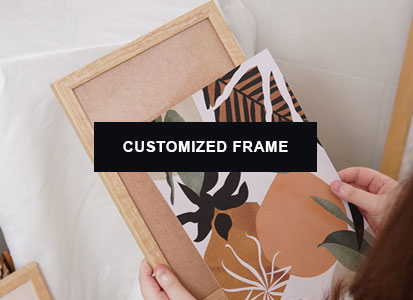How To Choose The Color and Style of Poster Frames

There are many frame colors and styles that are available in stores and these are the factors that sometimes confuse us. Before buying the frame for your poster or artwork, consider some factors first to avoid any mistakes. Things to consider are the measurements of your poster, the appearance of the personalized framed poster, and their effects on the overall appearance of your walls.
The ideal size
Posters that are available in stores are usually in their standard sizes. As a general rule, 24”x36” is a larger movie size poster, 18”x24” is associated with medium-sized prints, and smaller sizes tend to be 11”x17”.
Measure the art yourself and the slightest error and judgment with size can cause big mistakes when choosing the frame size.
The type of material to choose
Metal or wood? Both materials are perfect if you want to have your personalized framed posters. Though both materials have their good points, they also have disadvantages that may affect the decision process. Metals are better if you want to have more vibrant colors in your room. However, if you want to go natural, then wood would be the best choice.
The shape and design of the art
Posters are often in a rectangular shape but the art printed can be of various shapes and styles. The poster design can be moe of circles, squares, or ovals. Whatever the shapes may be, choose the frame that will complement the art. Sometimes, if you want a contrasting effect, try to mix and match.
Consider the thickness of the frame
In terms of sizes, many posters are big and as such, thinner frames are recommended when displaying them. This is also important when you have limited space but still want to squeeze in one last poster to cover a blank space. On the other hand, a minimalist poster such as a company logo may need thicker frames. This style may provide a solid barrier for the blank space surrounding the poster design.
How about the color of the frame
When it comes to frame colors, it is recommended to use the color wheel to avoid some confusion. Colors on the opposite sides of the wheel are considered complementing colors so that they could accent each other perfectly.




